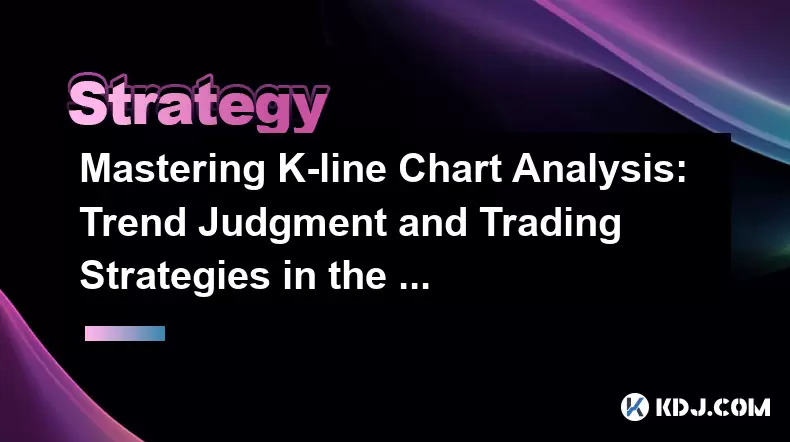-
 Bitcoin
Bitcoin $118300
-0.58% -
 Ethereum
Ethereum $3825
0.11% -
 XRP
XRP $3.137
-0.71% -
 Tether USDt
Tether USDt $0.9999
-0.01% -
 BNB
BNB $803.9
-3.37% -
 Solana
Solana $181.5
-1.94% -
 USDC
USDC $0.9999
0.01% -
 Dogecoin
Dogecoin $0.2238
-2.51% -
 TRON
TRON $0.3358
2.12% -
 Cardano
Cardano $0.7844
-2.16% -
 Hyperliquid
Hyperliquid $43.31
-1.48% -
 Sui
Sui $3.807
-4.04% -
 Stellar
Stellar $0.4203
-1.96% -
 Chainlink
Chainlink $17.79
-3.00% -
 Bitcoin Cash
Bitcoin Cash $567.8
-1.34% -
 Hedera
Hedera $0.2614
-4.30% -
 Avalanche
Avalanche $24.19
-4.46% -
 Litecoin
Litecoin $109.2
-0.74% -
 UNUS SED LEO
UNUS SED LEO $8.969
-0.01% -
 Toncoin
Toncoin $3.404
3.97% -
 Ethena USDe
Ethena USDe $1.001
-0.01% -
 Shiba Inu
Shiba Inu $0.00001307
-3.19% -
 Uniswap
Uniswap $10.33
-1.23% -
 Polkadot
Polkadot $3.884
-4.06% -
 Monero
Monero $312.9
-1.87% -
 Dai
Dai $1.000
0.01% -
 Bitget Token
Bitget Token $4.537
-2.24% -
 Pepe
Pepe $0.00001156
-3.40% -
 Cronos
Cronos $0.1437
-0.89% -
 Aave
Aave $282.8
-2.77%
Mastering K-line Chart Analysis: Trend Judgment and Trading Strategies in the Crypto Market
K-line charts are vital for crypto trading, revealing price trends and reversals through candlestick patterns like hammers, engulfing, and doji.
Jun 12, 2025 at 05:43 pm

Understanding the Basics of K-line Charts
K-line charts, also known as candlestick charts, are essential tools for analyzing price movements in the cryptocurrency market. Each candlestick represents a specific time interval and provides four key data points: open, high, low, and close prices. The body of the candle reflects the opening and closing prices, while the wicks (or shadows) show the highest and lowest prices reached during that period.
In the crypto market, where volatility is common, understanding how to read these candles is crucial. A green or white candle indicates that the closing price was higher than the opening price, signaling bullish momentum. Conversely, a red or black candle shows that the closing price was lower than the opening, reflecting bearish sentiment.
The size and shape of the candle offer further insights into market psychology. For example, a long upper wick suggests rejection at higher levels, while a long lower wick indicates strong support. These patterns help traders make informed decisions about potential reversals or continuations.
Identifying Key Candlestick Patterns
Several well-known candlestick patterns can provide valuable signals when analyzing crypto price action. One such pattern is the hammer, which typically forms at the bottom of a downtrend and features a small body with a long lower shadow. This suggests that buyers are stepping in after a sell-off.
Another significant pattern is the shooting star, characterized by a small body near the open and a long upper shadow. It often appears at the top of an uptrend and may indicate an impending reversal. Similarly, the engulfing pattern consists of two candles — one bearish followed by a larger bullish candle (or vice versa) — suggesting a shift in momentum.
The doji is another important formation. It occurs when the open and close prices are nearly equal, resulting in a very small body. This indecision between buyers and sellers often precedes a major move, especially if it appears at a key support or resistance level.
Traders should also pay attention to morning star and evening star formations. These three-candle patterns signal trend reversals and are widely used in both traditional and crypto markets due to their reliability.
Analyzing Trends Using K-lines
Trend analysis using K-line charts involves identifying the overall direction of the market based on historical price behavior. In an uptrend, each successive high and low should be higher than the previous ones, forming a series of higher highs and higher lows. Conversely, a downtrend is marked by lower highs and lower lows.
One effective method for confirming trends is to use moving averages alongside candlestick patterns. For instance, when the price remains consistently above a 50-period moving average, it reinforces the strength of an uptrend. Similarly, if the price struggles to rise above a key moving average, it may suggest a weakening trend.
Support and resistance levels also play a vital role in trend identification. Repeated rejections at a certain price level can indicate strong resistance, while consistent bounces off a specific level suggest robust support. Traders often combine this with volume analysis — rising volume during breakouts or breakdowns can validate the strength of a trend.
It’s important to note that no single indicator guarantees success. Therefore, combining K-line chart analysis with other technical indicators like Relative Strength Index (RSI) or MACD can enhance accuracy and reduce false signals.
Applying Trading Strategies Based on K-line Signals
Successful trading in the crypto market requires more than just recognizing candlestick patterns; it demands actionable strategies. One popular approach is swing trading, where traders aim to capture gains from short- to medium-term price swings. By identifying reversal patterns such as double tops, head and shoulders, or rising/falling wedges, traders can enter positions with favorable risk-reward ratios.
Another strategy is trend following, which involves entering trades in the direction of the prevailing trend. For example, during a strong uptrend, traders might look for pullbacks to key support levels before buying again. The presence of bullish candlesticks like piercing lines or bullish engulfing patterns at these support zones can serve as confirmation signals.
Some traders prefer breakout trading, especially in highly volatile assets like cryptocurrencies. When a price breaks through a well-established resistance or support level with strong volume, it can lead to rapid moves. In such cases, waiting for a candle to close beyond the breakout level increases the likelihood of a successful trade.
Risk management is equally critical. Setting stop-loss orders below recent swing lows or above swing highs helps protect capital. Additionally, adjusting position sizes based on volatility and account size ensures sustainable trading performance over time.
Common Mistakes to Avoid in K-line Analysis
Even experienced traders can fall into pitfalls when interpreting K-line charts. One common mistake is overtrading based solely on candlestick signals without considering the broader market context. For example, a bullish hammer may appear promising, but if it forms in a strong downtrend with heavy selling pressure, its significance diminishes.
Another error is ignoring volume. Volume acts as a confirmation tool for many candlestick patterns. If a bullish engulfing pattern appears without a corresponding increase in volume, it may not carry much weight. On the other hand, a sharp spike in volume accompanying a reversal candle adds credibility to the signal.
Traders also sometimes misinterpret patterns due to timeframe mismatches. A bullish signal on a 1-hour chart may contradict the bearish structure seen on a daily chart. Therefore, always align your strategy with the dominant trend observed on higher timeframes.
Lastly, failing to implement proper risk-reward ratios can lead to unsustainable losses. Even with accurate K-line readings, poor money management can erode profits quickly. Always assess how much you're willing to lose versus how much you stand to gain before entering any trade.
- Use multiple timeframes to confirm the validity of a pattern.
- Incorporate volume analysis to filter out weak signals.
- Apply strict stop-loss rules to limit downside risk.
- Avoid emotional trading based on isolated candlestick formations.
Frequently Asked Questions (FAQ)
Q: Can K-line analysis alone be sufficient for making trading decisions?
A: While K-line analysis offers valuable insights, relying solely on candlestick patterns can lead to misleading signals. Combining them with other technical indicators like RSI, MACD, or Bollinger Bands improves decision-making accuracy.
Q: How do I determine whether a candlestick pattern is reliable?
A: The reliability of a candlestick pattern depends on several factors including its location within the trend, volume confirmation, and alignment with support/resistance levels. Patterns occurring at key price zones tend to be more trustworthy.
Q: What is the best timeframe for K-line analysis in crypto trading?
A: There is no universal best timeframe, as it depends on your trading style. Day traders may focus on 5-minute or 15-minute charts, while swing traders might analyze 4-hour or daily charts. Always consider the bigger picture using higher timeframes before acting on lower ones.
Q: Are all candlestick patterns applicable to the crypto market?
A: Most traditional candlestick patterns apply to crypto, but due to the market's high volatility and 24/7 nature, some patterns may behave differently. Backtesting strategies on historical crypto data helps validate their effectiveness.
Disclaimer:info@kdj.com
The information provided is not trading advice. kdj.com does not assume any responsibility for any investments made based on the information provided in this article. Cryptocurrencies are highly volatile and it is highly recommended that you invest with caution after thorough research!
If you believe that the content used on this website infringes your copyright, please contact us immediately (info@kdj.com) and we will delete it promptly.
- Ozak AI Presale: Your Chance to Turn 1 ETH into 20? A Crypto Investment Deep Dive
- 2025-07-30 15:50:12
- IPO, Bitcoin, and Treasury: A New Era of Crypto Investment?
- 2025-07-30 14:30:12
- Bitcoin, Binance, and Whales: Decoding the Latest Market Moves
- 2025-07-30 14:50:12
- Bitcoin, Binance, and Whales: Decoding the $1.2B Shuffle
- 2025-07-30 16:10:12
- MultiBank Group's $MBG Token: Bridging TradFi and Web3 with LBank Listing
- 2025-07-30 16:10:12
- NFTs: Punks, Penguins, and the Market's Mosh Pit
- 2025-07-30 16:16:00
Related knowledge

How to avoid common crypto investment mistakes?
Jul 13,2025 at 01:35am
Understanding the Risks of Crypto InvestmentInvesting in cryptocurrency can be highly rewarding, but it also comes with significant risks. One of the ...

What is a long-short crypto strategy?
Jul 15,2025 at 10:56am
Understanding the Basics of a Long-Short Crypto StrategyA long-short crypto strategy is an investment approach where traders simultaneously take long ...

What is a long-short crypto strategy?
Jul 11,2025 at 01:28pm
Understanding the Basics of Long-Short Crypto StrategyA long-short crypto strategy is an investment approach where traders take both long and short po...

How to use the RSI indicator for crypto?
Jul 12,2025 at 03:56pm
Understanding the RSI Indicator in Cryptocurrency TradingThe Relative Strength Index (RSI) is a momentum oscillator used to measure the speed and chan...

Is copy trading a good strategy for crypto beginners?
Jul 12,2025 at 08:28am
Understanding Copy Trading in the Cryptocurrency MarketCopy trading is a strategy where novice traders replicate the trades of experienced investors a...

How to build a crypto portfolio with $1000?
Jul 13,2025 at 08:14pm
Understanding the Basics of Cryptocurrency InvestmentBuilding a crypto portfolio with $1000 starts with understanding the fundamentals of cryptocurren...

How to avoid common crypto investment mistakes?
Jul 13,2025 at 01:35am
Understanding the Risks of Crypto InvestmentInvesting in cryptocurrency can be highly rewarding, but it also comes with significant risks. One of the ...

What is a long-short crypto strategy?
Jul 15,2025 at 10:56am
Understanding the Basics of a Long-Short Crypto StrategyA long-short crypto strategy is an investment approach where traders simultaneously take long ...

What is a long-short crypto strategy?
Jul 11,2025 at 01:28pm
Understanding the Basics of Long-Short Crypto StrategyA long-short crypto strategy is an investment approach where traders take both long and short po...

How to use the RSI indicator for crypto?
Jul 12,2025 at 03:56pm
Understanding the RSI Indicator in Cryptocurrency TradingThe Relative Strength Index (RSI) is a momentum oscillator used to measure the speed and chan...

Is copy trading a good strategy for crypto beginners?
Jul 12,2025 at 08:28am
Understanding Copy Trading in the Cryptocurrency MarketCopy trading is a strategy where novice traders replicate the trades of experienced investors a...

How to build a crypto portfolio with $1000?
Jul 13,2025 at 08:14pm
Understanding the Basics of Cryptocurrency InvestmentBuilding a crypto portfolio with $1000 starts with understanding the fundamentals of cryptocurren...
See all articles

























































































